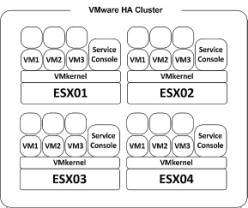Using Microsoft Cluster Services to Consolidate Your Infrastructure
As I mentioned in a previous post, Failover Clustering Overview | Windows Server 2008 R2, the idea of using Microsoft Cluster Services (MSCS) to host multiple services seemed quite viable as HA solution. For many companies that use Microsoft server products as the foundation of their infrastructure, there could be great benefit in consolidating their services into clusters. The benefits could include ease of upgrade and patching using the rolling upgrade method, as well as ability to scale the solution as the business grows. Services such as DHCP, Exchange, SQL Server, and File Services could be consolidated into one or multiple clusters. Architected with disaster recovery in mind, services could be failed over to a cluster in another site. That could help to knock out two problems with one solution. To give you an idea of what I am talking about, please review this TechNet article – How A Cluster Server Works. The article is a little dated but the information is so good that I had to add it to the mix. Please let me know what you think, and if you have any questions. I would be happy to share my thoughts.

